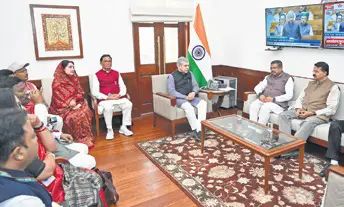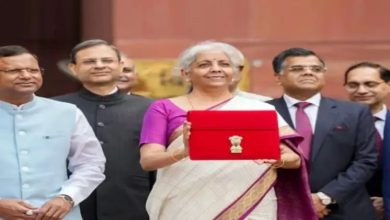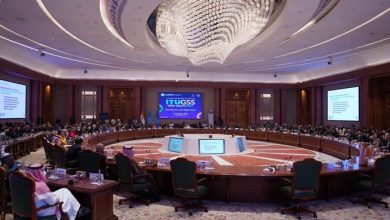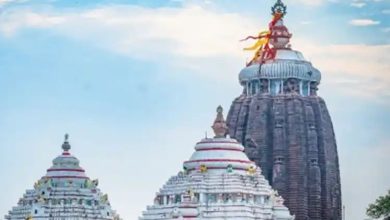Odisha’s political shift: BJP’s rise, welfare reforms, and governance challenges in 2024

BHUBANESWAR: Odisha witnessed a significant political shift in 2024 as the BJP wrested power from the BJD, transforming the state into a battleground for competing political visions.
Both parties focused on welfare schemes and infrastructure, sparking debates over ownership and political rebranding.
The previous BJD government had rolled out a slew of welfare initiatives and poll sops worth over Rs 30,000 crore ahead of the Assembly and general elections held in May-June. Major projects included the Rs 6,255.94 crore Bhubaneswar Metro Rail Project, a Rs 4,000 crore integrated irrigation project in Malkangiri, the Nua-O scholarship for students, and Rs 1 lakh interest-free loans under the ‘SWAYAM’ scheme.
In the final quarter of the financial year, the BJD government sought to woo voters by providing a one-time livelihood assistance of Rs 1,000 to each of the 95,90,526 families covered under the PDS scheme, along with two jute bags per family, costing Rs 1,200 crore. Additionally, maternity benefits were doubled under the Mamata scheme for pregnant and lactating mothers. Around 7,200 Bhagabat Tungis received Rs 50,000 each.
Cultural initiatives included the first World Odia Language Conference in Bhubaneswar, celebrating Odia’s 2,500-year history.
After assuming office on June 12, Chief Minister Mohan Charan Majhi fulfilled BJP’s poll promise by reopening all four gates of Lord Jagannath temple in Puri and unlocking its Ratna Bhandar (treasure trove). Three gates had remained closed since the Covid-19 pandemic in 2020, causing overcrowding at the entrance.
In July, Majhi presented the state’s highest-ever budget of Rs 2.65 lakh crore, focusing on inclusive growth. Nineteen new initiatives were introduced to support farmers, women, youth, and marginalised communities. The BJP government allocated Rs 500 crore for promoting Jagannath culture and Rs 200 crore for preserving Odia art, culture, heritage, and literature.
The new administration implemented significant bureaucratic reshuffles, prioritising political leadership over bureaucratic dominance. It emphasised accountability and efficiency, signalling a departure from the previous governance model under the BJD.
Keeping its election promises, the government launched welfare schemes like Subhadra Yojana and Samrudha Krushak Yojana. The Subhadra scheme provides eligible women aged 21 to 60 with Rs 50,000 in 10 instalments over five years, while the Samrudha Krushak Yojana increased paddy procurement prices to Rs 3,100 per quintal.
A new scheme, ‘Madho Singh Haath Kharcha Yojana,’ was introduced to curb student dropouts by offering Rs 5,000 to every tribal student.
Despite threats from Khalistani separatist Gurpatwant Singh Pannun, the BJP government successfully hosted the three-day all-India DG-IGP conference-the first such event in the state-earning praise from the Centre and other states.
To attract investments, the government conducted roadshows in Singapore and across India, promoting Odisha as a premier investment destination. It secured deals, including a joint venture between JSW Group and POSCO for a mega steel plant in Keonjhar-a project revived more than a decade after the South Korean firm had pulled out due to land acquisition hurdles.
As promised, the BJP government also announced the implementation of Ayushman Bharat Pradhan Mantri Jan Arogya Yojana (PMJAY) to provide cashless health coverage of up to Rs 5 lakh per family per annum across 27,000 hospitals nationwide. However, it retained the essence of several BJD programmes, rebranding at least 21 welfare schemes. This move triggered accusations from both parties, each accusing the other of politicising welfare initiatives for electoral gains.
To align with the national vision of Viksit Bharat@2047, the government drafted Odisha Vision 2036 and 2047 documents, targeting a $1.5 trillion economy by 2047 and aiming to make Odisha a developed state by 2036, marking its centenary.
As promised, the BJP government also announced the implementation of Ayushman Bharat Pradhan Mantri Jan Arogya Yojana (PMJAY) to provide cashless health coverage of up to Rs 5 lakh per family per annum across 27,000 hospitals nationwide. However, it retained the essence of several BJD programmes, rebranding at least 21 welfare schemes. This move triggered accusations from both parties, each accusing the other of politicising welfare initiatives for electoral gains.
To align with the national vision of Viksit Bharat@2047, the government drafted Odisha Vision 2036 and 2047 documents, targeting a $1.5 trillion economy by 2047 and aiming to make Odisha a developed state by 2036, marking its centenary.
Majhi’s government faced challenges, including hooch deaths in Ganjam, communal tensions in Balasore and Bhadrak, and mismanagement during the Rath Yatra. The fall of Lord Balabhadra’s idol from the chariot during the Rath Yatra proved embarrassing. Furthermore, the deaths of three tribal women after consuming mango kernel gruel due to an e-KYC failure damaged the administration’s reputation.
Despite these hurdles, the BJP government’s sweeping reforms, ambitious welfare schemes, and investment drives marked a transformative year for Odisha, setting the stage for continued debates over governance and political identity.







